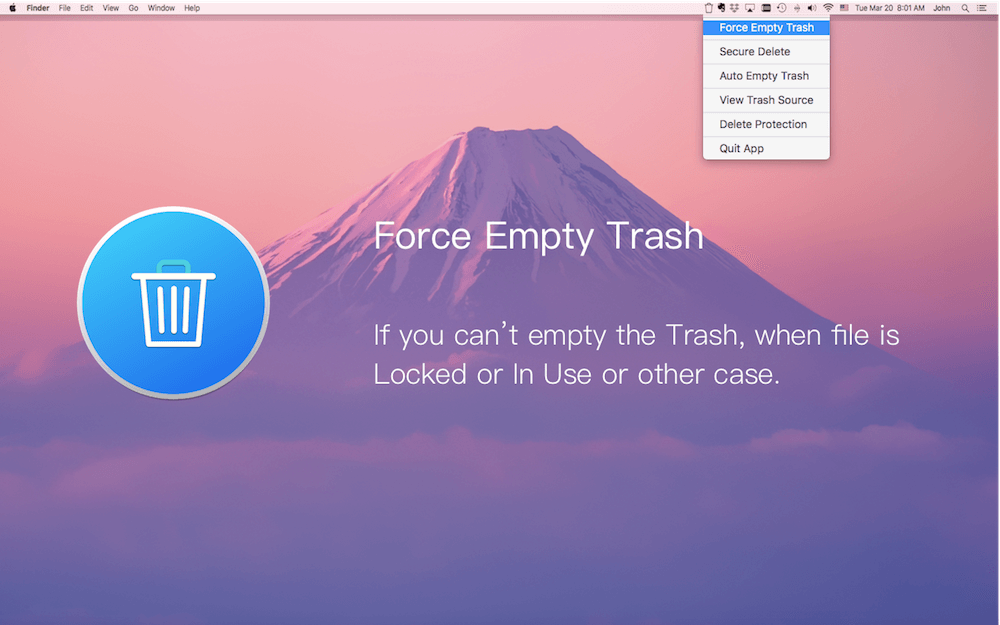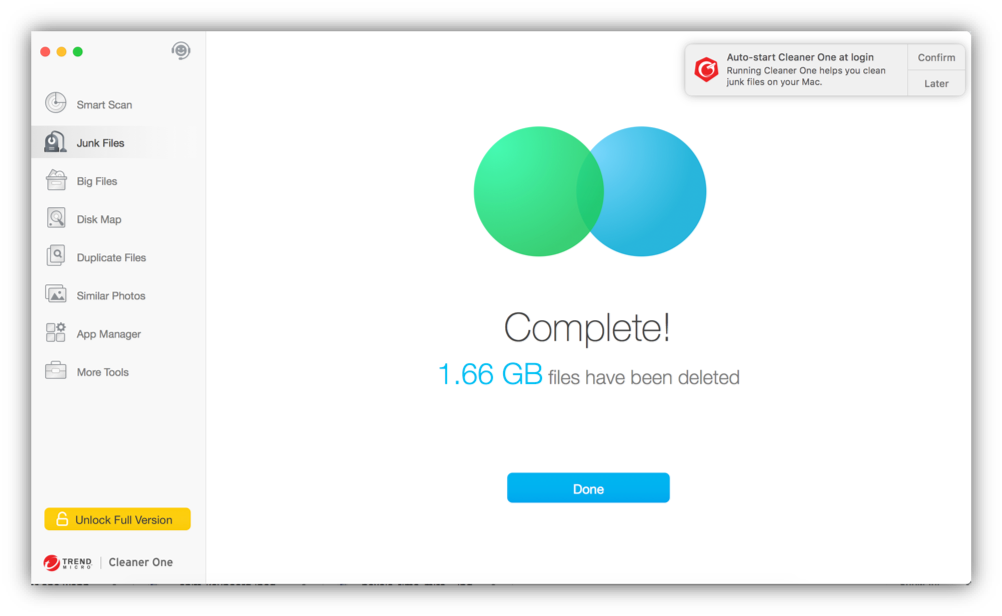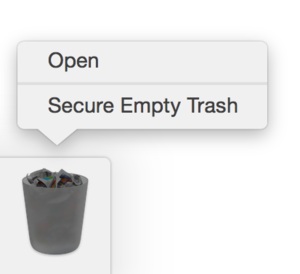
- FORCE EMPTY TRASH IN HIGH SIERRA HOW TO
- FORCE EMPTY TRASH IN HIGH SIERRA SOFTWARE
- FORCE EMPTY TRASH IN HIGH SIERRA PASSWORD
- FORCE EMPTY TRASH IN HIGH SIERRA MAC
FORCE EMPTY TRASH IN HIGH SIERRA HOW TO
The next section describes how to increase free space on your startup disk.
FORCE EMPTY TRASH IN HIGH SIERRA MAC
This cleanup task will help regain free space and optimize your Mac performance. Your Mac will function properly without any errors or slowdown if you clean up your Macintosh HD time and again. The issue will be fixed from your Mac solid-state drive. Mac boots into macOS Recovery mode.Ĭ) From macOS Utilities, select Disk Utility, then click Continue.ĭ) From the sidebar, select Macintosh HD and click the First Aid tab.Į) Click Run to initiate the storage drive repair task. The steps are as follows:Ī) Restart your Mac, then immediately press and hold Command + R keys.ī) Release the keys when the Apple logo appears. If the issue persists, you can run First Aid from Disk Utility to force TRIM operation on your Mac SSD. Now, you’ll find the increased free space on your Macintosh HD in the Finder window. Mac now boots into Safe Mode.Ĭ) macOS fixes all errors during booting. The steps are as follows:Ī) Restart your Mac, then immediately press and hold the Shift key.ī) Release the key when you see the Apple logo. Try booting your Mac in Safe Mode to fix any errors. If the issue isn’t fixed, perform the next solution. Hopefully, the Finder window will now show the increased space on your Macintosh HD. On opening the Storage tab, macOS performs a renewed calculation on Macintosh HD and displays the used and available space accordingly. When you don’t see increased storage space on Macintosh HD even after Trash's emptying, you should perform the following steps:ī) Click the Storage tab to find storage disk usage according to file types. But don’t worry you can fix the issue by performing the troubleshooting procedures presented next. This issue can be due to any macOS error. Sometimes, after you delete some files from your Macintosh HD, and then empty your Trash, you don’t see the increased storage space on the startup disk. To my surprise, the Finder window didn’t show the increased free space in Macintosh HD.

So, I deleted a few inessential files from the drive and then emptied the Trash.
FORCE EMPTY TRASH IN HIGH SIERRA PASSWORD

Go back to the Trash and drag the files you want to delete to the Terminal window.This is the command to force-delete files. Type Terminal and press Return to launch it.You should therefore proceed with caution when using the nuclear method described below: You may have accidentally sent something to the Trash that's important for a certain app to operate. However, it might be that macOS is preventing you from deleting files for a good reason. It also gets around any other errors that prevent the Trash from emptying.Īs such, it's an effective way of permanently deleting files. This overrides any locks on your files and deletes files that are still in use. This is quite useful if your Mac won't let you unlock any files.Īnother option is to use a Terminal command to force the Trash to empty. Go back to Trash and drag the file you want to delete to the Terminal.

This command means list open files and displays a list of files in use with the processes that opened them. If not, another option is to use Terminal to check which app has the file locked. This will delete the file if a startup app was using it. Click the Empty button (in the top-right corner).Once you've booted up in Safe Mode, open the Trash.Turn on your Mac and immediately hold Shift.To boot your Mac in Safe Mode and empty the Trash:
FORCE EMPTY TRASH IN HIGH SIERRA SOFTWARE
This stops some software from booting up automatically. You can get around this by starting up your Mac in Safe Mode. Advanced File Usage TroubleshootingĪlternatively, a startup or login item might be using the file in question. Now close any additional programs that you think might be stopping you from clearing the Trash on your Mac. To test whether this is the case, press Option + Cmd + Esc to open the Force Quit window.

In these cases, perhaps a background process is using it. Occasionally, you might not be able to identify exactly where the file is open.


 0 kommentar(er)
0 kommentar(er)
